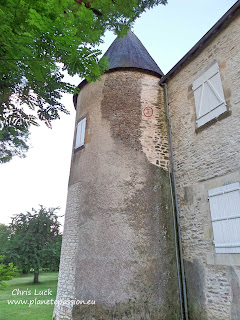The other day a chap on a French Beekeeping Face book group
posted a photo of a beetle trying to get into one of his hives. His initial reaction having “Googled” was
that it may have been a Large hive beetle, Oplostomus
fuligineus, a species that is found in Africa and although this has not yet been recorded in France France Italy France
Anyway it was clearly a Chafer, that much was indisputable
but not a Large hive beetle. I was sure, (ha,ha,ha), at first that it was dark
Rose Chafer beetle due to its general appearance and size, (close to 2cm).
However I couldn’t find any evidence of Rose Chafers trying to enter hives and
although they are plentiful at our place, (Rose chafers and hives), I have
never seen them on my hives so I started to deepen my search for any examples
of this. After much searching and changing search terms I finally came up with
some examples of where peoples hives had been invaded by chafers, but not Rose
Chafers but Protaetia morio known as la
Cétoine noire. In many ways they look like dark Rose chafers, they are 1.3 to 2
cm long, the dorsal surface is dull, blackish to brownish with small ochre
spots more or less marked, or even absent, on the pronotum and aligned
transversely on the elytra. Although the greatest populations are to be found
in the Mediterranean zone they are present to some extent in almost all other
regions of France
Click on images to enlarge
Click on images to enlarge
It seems that the observations of them entering honey bee
colonies take place in July and August and if the beetles are numerous they can cause severe
disruption for the bees which can’t eject them as the beetles bodies and wing cases
are too hard for a bee sting to penetrate. In the case of a hive it should be a
simple case of using a hornet guard to keep them out but we can assume that
they have developed this behaviour over thousands of years by entering natural
colonies in trees.
Chris










































